Advertisement
Climate change is threatening farms across New England. Here’s how farmers are responding
Resume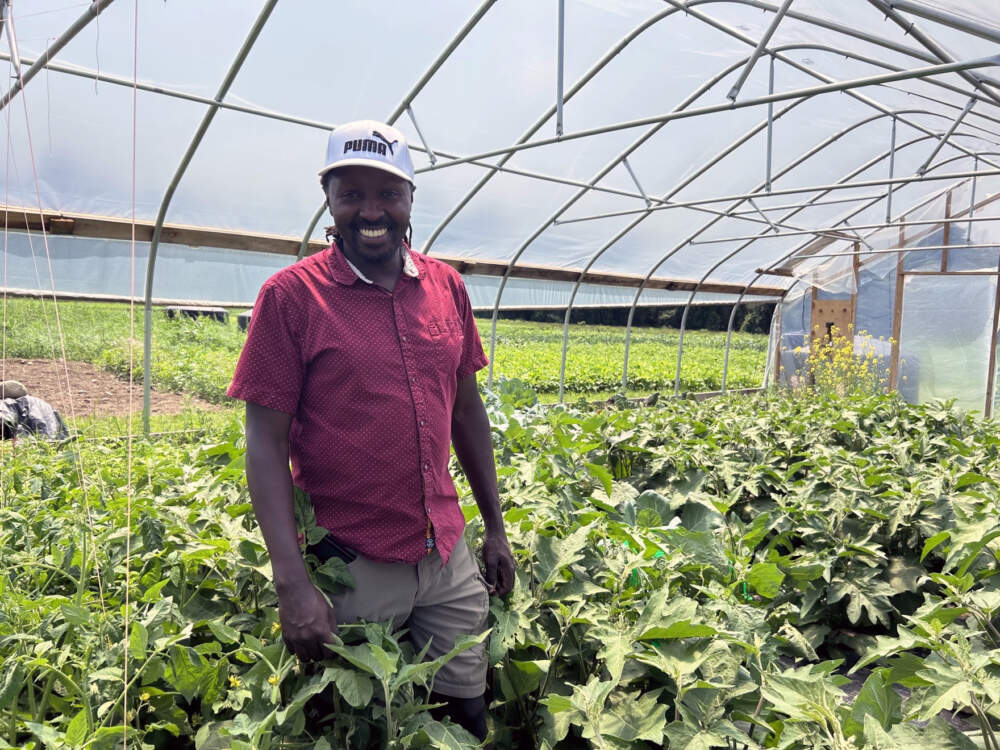
On a hot July day at Fresh Start Farms in Concord, New Hampshire, the kale, swiss chard, African eggplant and amaranth were growing strong.
“It’s very obvious to see how things are performing,” said Anthony Munene, project manager for the New American Sustainable Agriculture Project, which has farms across New Hampshire.
The organization helps set up people who arrive as immigrants or refugees with training and land to start as farmers.
Munene says the vegetables are performing well because of some new practices at this site, the organization’s newest property.
It’s a climate-smart demonstration farm, where farmers are implementing a variety of practices to manage the increasing threats from climate change.
Across the region, heavy rains have caused massive damage for farmers this summer. Problems from heat, pests, and drought are common. But farmers in the region are changing some of their practices to become more resilient. And they're getting help from state and federal programs to try these new techniques.
Munene has been with the New American Sustainable Agriculture Project for more than eight years, and he’s seen the effects of climate change.
“It’s either too hot, or too much rain,” he said. “This year it's raining.”
One of the changes Fresh Start implemented was planting cover crops. These crops get planted outside of the usual growing season to keep the soil healthy and prevent erosion.
Soil and water, Munene said, are the two core tenets of climate-smart farming.
“If you’re able to have good soil, which has enough organic matter, then it can keep, and also release water, quick,” he said.
Munene’s team also built high tunnels — big half-moon-shaped structures that work like a kind of greenhouse — with solar panels on top. Gutters on the roof of the high tunnels collect rainwater and funnel it into big barrels, which are used for irrigation.
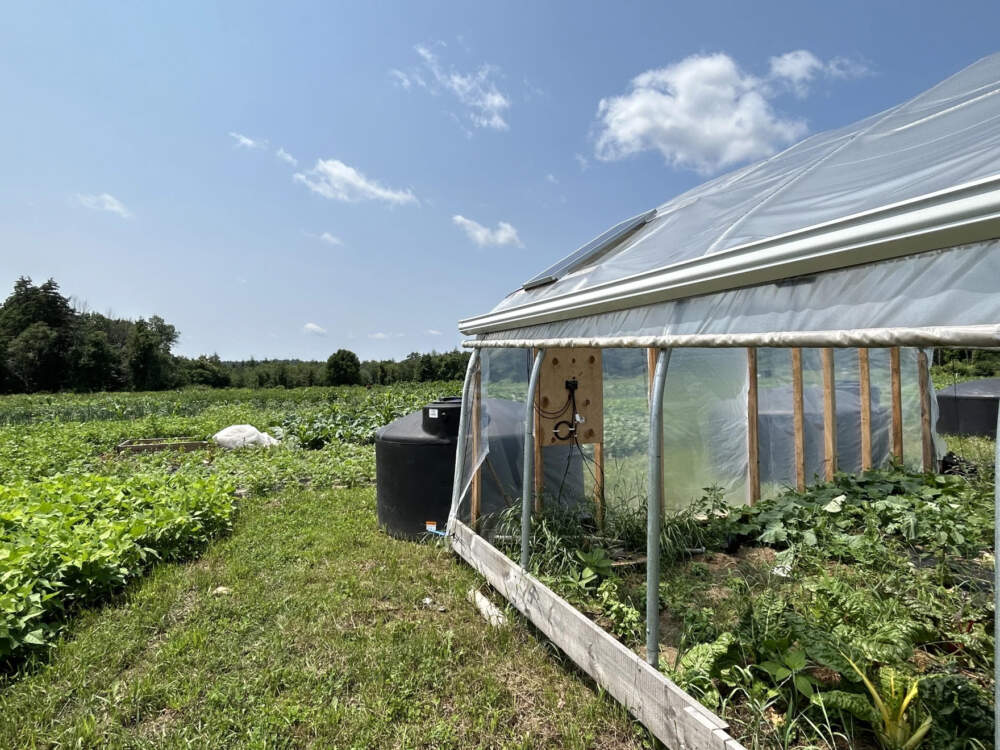
The farm has also implemented new weed management practices, using fabric that helps protect plants from weeds and pests. And they’ve planted 2,000 pollinator plants — colorful flowers that surround the vegetables.
Munene said another big help is the kinds of crops farmers are growing, like amaranth and nightshade plants.
“They are growing very hearty ethnic crops which don't get affected a lot by too much rain,” he said. “Lettuce and tomatoes are rotting, but they are not growing it.”
Munene’s team got help from the Natural Resources Conservation Service, part of the U.S. Department of Agriculture. That agency works with farmers to develop conservation plans, and can provide financial assistance for practices that lead to better soil health and other environmental benefits.
Rebekah Lauster, the acting state conservationist for the NRCS in New Hampshire, says they have two main programs — the Environmental Quality Incentives program and the Conservation Stewardship Program. Both allow farmers to connect with federal resources locally.
“It allows these landowners to have a local person that they can call and say, ‘Hey, I have this concern. I have grazing animals, it’s getting hotter,’” she said. “We then are able to go out, meet with them, take a look at what they have on their farm.”
New Hampshire’s conservation districts have a grant program that’s already distributed funding to 49 farms across the state, for projects that mitigate their climate-warming emissions, or help them prepare for new conditions.
Matt Smetana, the community engagement coordinator for the Cheshire County Conservation District, says farmers are an integral part of climate resilience.
“Farms and farmers are really integrated into the existing communities that they're a part of and are very well suited to navigating and addressing climate change and resiliency challenges,” he said. “I can't imagine a more connected community to the land than our farmers.”
Additionally, the University of New Hampshire’s Cooperative Extension is running a pilot program, where specialists work one-on-one with farmers to identify how their operations can become more resilient to climate change.
Getting used to doing things differently
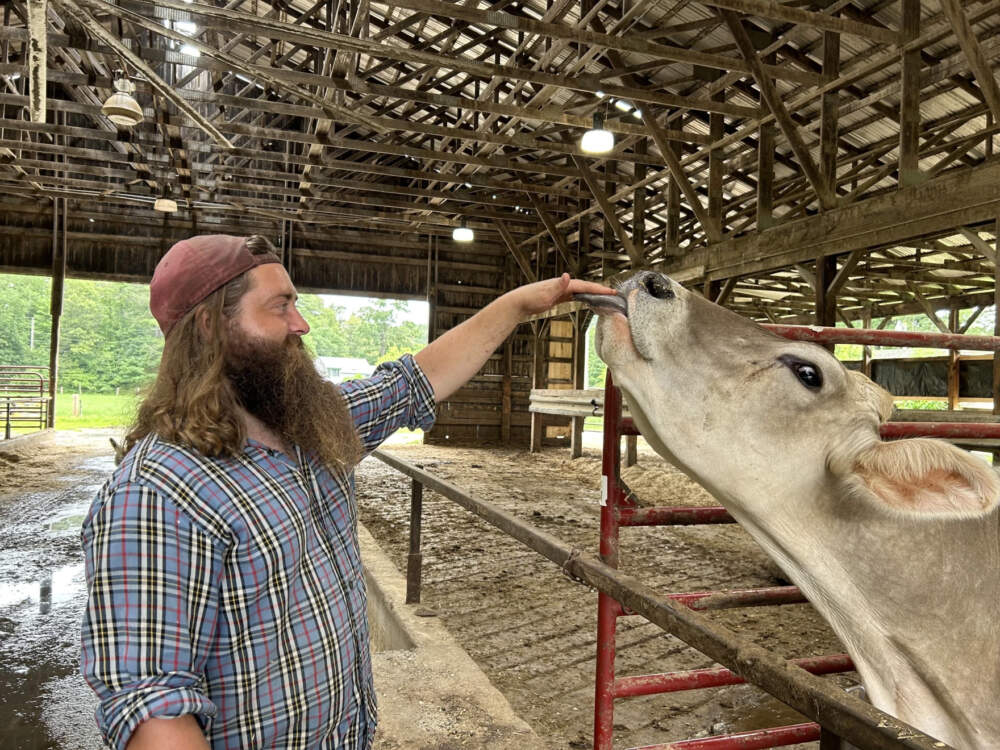
The current generation of family farmers running Bohanan Farm has been working with specialists from the New Hampshire Extension, as they try out some new practices for climate resilience.
Nate Robertson is in charge of the farm’s roughly 120 dairy cows. He says, even before humans start feeling stressed by heat, the cows feel it, starting at about 70 degrees. The family sees cows lose weight — up to 5 pounds — during heat waves.
“We need to try and abate it as much as we can, making sure they’ve got good clean water and easy access to it,” he said.
The farm runs fans for the cows on hot days, and they run sprinklers in the holding area before the cows get milked.
They’re also looking into new breeds that could do better in warmer environments. And, they say, next time they need to redesign the main barn they use for their cows, they’ll look to Florida dairy barns designed for hot weather as an example.
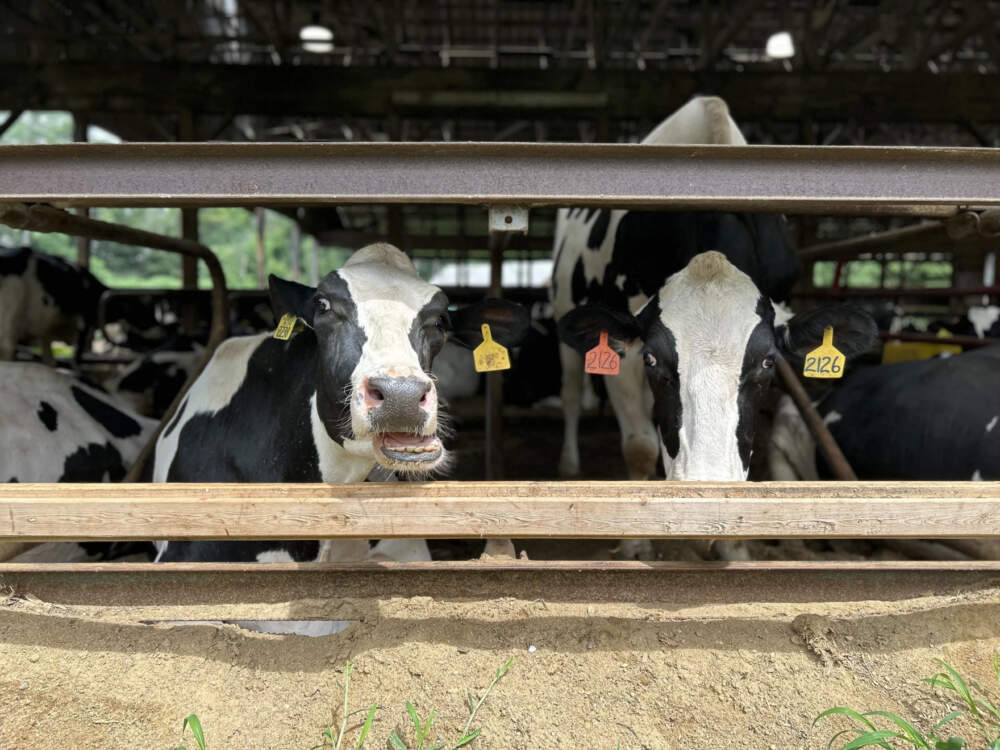
Si Robertson, Nate’s brother, is focusing on the fields that grow grain for the cows. About five years ago, the farm got some help from the NRCS to help transition to no-till farming, meaning they don’t plow the soil before planting in it. This helps reduce nutrient loss and soil erosion in the event of heavy rains. They also plant a cover crop, like Fresh Start’s demonstration farm.
Si says it wasn’t just for climate reasons — the new system saves them money on fuel. But the overall improvement in soil health has been noticeable.
“There’s also benefits to leaving the soil biome intact. The fungi and the microbes and even, like, the insects and worms that are growing in the soil, they do a lot of good for feeding the crops,” he said.
And similar to what Fresh Start is seeing with their soil, it can retain and release water as needed.
Jamie Robertson, Si and Nate’s father, says all of these changes have sometimes been tough to watch. The farm has been in his wife’s family since 1907. And he says with the no-till system, the fields in spring can look like a “messy house,” with the corn sprouts interspersed with the remnants of a cover crop.
“One of the things I do miss is in a nice tilled field, when that corn first starts coming up, you hear it popping up in rows, and it’s just these ribbons of little green rows for acres,” he said.
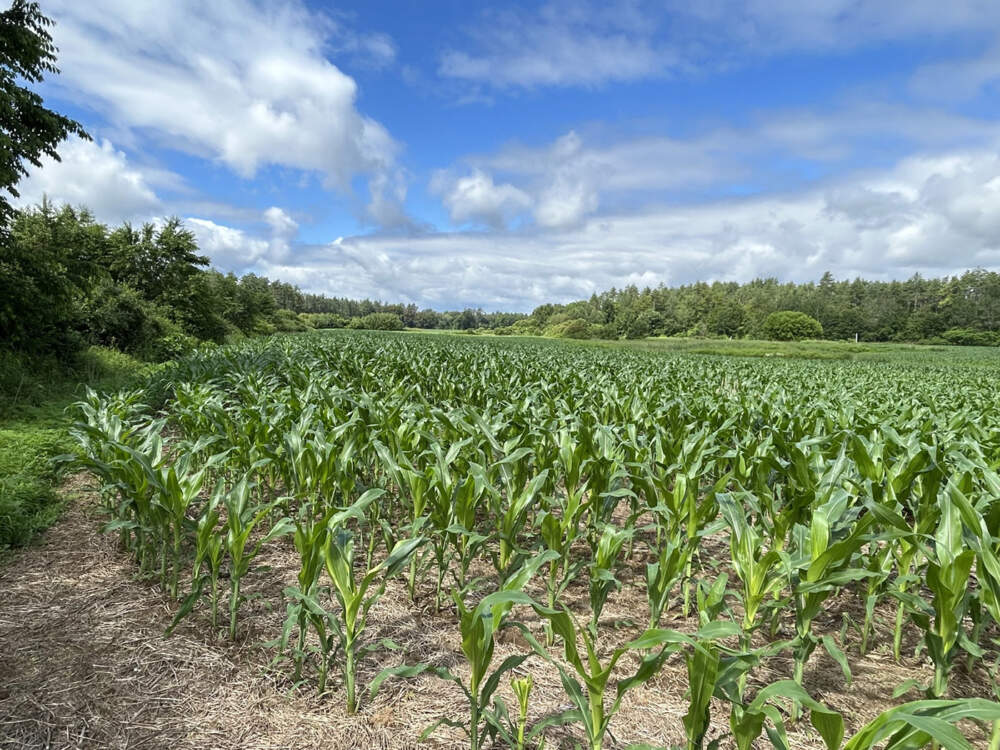
But Jamie and his sons see how the fields are healthier now. Areas where corn never grew well in the past are thriving.
Munene, the project manager for the New American Sustainable Agriculture Project, says farmers at Fresh Start are also seeing that the plants grown on their climate demonstration farm are performing better.
“The farmers themselves have realized that to mitigate climate change, it's very important to approach things differently,” he said.
Munene is making a point of letting other farmers in the region know there’s help available, and that so far, all of the changes they’ve made have had a big impact.
This story is a production of the New England News Collaborative. It was originally published by New Hampshire Public Radio.
This segment aired on August 29, 2023.